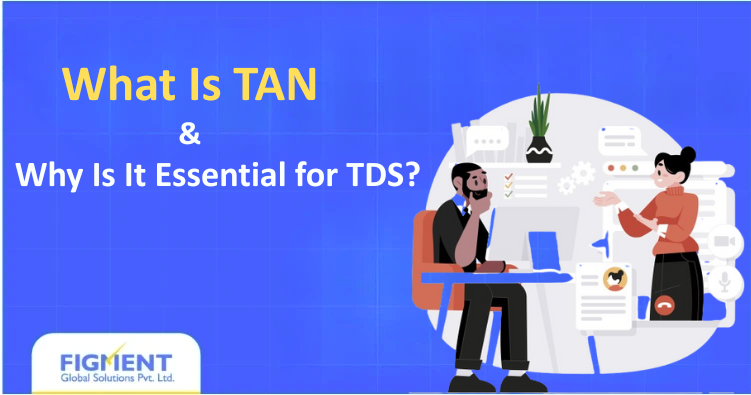With increasing globalization, Indian entities frequently engage in transactions with non-resident individuals and foreign companies. Such cross-border transactions often involve payments in the nature of royalty, interest, fees for technical services, or dividends. In such cases, the Indian payer is generally required to deduct tax at source (TDS) under the provisions of the Income Tax Act, 1961.
However, where a Double Taxation Avoidance Agreement (DTAA) exists between India and the country of residence of the non-resident recipient, the provisions of the treaty may provide for a reduced rate of TDS or exemption altogether, subject to specific conditions.
This article provides a comprehensive overview of the treatment of TDS under DTAA, with reference to the relevant statutory provisions and procedural requirements under Indian law.
Legal Framework for TDS on Non-Resident Payments
Under section 195 of the Income Tax Act, 1961, any person responsible for paying to a non-resident any sum chargeable to tax in India is required to deduct income tax at the time of credit or payment, whichever is earlier.
However, as per section 90(2) of the Act, where the Central Government has entered into an agreement (DTAA) with a foreign country for avoidance of double taxation, an assessee has the option to be governed by the provisions of the Act or of the DTAA, whichever are more beneficial.
Conditions for Availing DTAA Benefits
To avail of the beneficial provisions under DTAA, the non-resident payee is required to comply with the following:
1. Tax Residency Certificate (TRC)
In accordance with section 90(4), it is mandatory for the non-resident to furnish a Tax Residency Certificate issued by the tax authority of the country of residence.
2. Form 10F
As per Section 90(5) of the Income Tax Act, the non-resident must also furnish certain prescribed information, including the taxpayer’s nationality, tax identification number, status, and address. This information is provided through electronically filed Form 10F.
3. PAN Requirement
As per section 206AA of the Income Tax Act, where a non-resident does not furnish a valid PAN, TDS is generally required to be deducted at 20% or the applicable rate, whichever is higher. However, courts have clarified that DTAA provisions override this section. In Danisco India Pvt. Ltd. v. UOI (Delhi HC) and Infosys BPO Ltd. v. DCIT (Bangalore ITAT), it was held that if the non-resident provides a valid Tax Residency Certificate (TRC) and Form 10F, the lower DTAA rate applies even without PAN. Therefore, TDS should be deducted at the DTAA rate, not 20%, provided treaty conditions are met.
4. No Permanent Establishment (PE) Declaration
In many treaties, income such as royalties, fees for technical services, or business profits are taxable in India only if the non-resident has a Permanent Establishment in India. A declaration confirming the absence of a PE may therefore be required to apply the DTAA benefit.
Procedural Steps for Deducting TDS under DTAA
- Determine the Nature of the Payment
Categorize the payment correctly (e.g., royalty, interest, FTS, dividend) as per the definition under the DTAA and the Income Tax Act. - Refer to the Relevant DTAA
Identify the appropriate article in the DTAA and ascertain the applicable rate and conditions. Treaties are available on the official website of the Income Tax Department. - Compare Rates under Domestic Law and DTAA
Apply the rate that is more beneficial to the assessee, in accordance with section 90(2). - Obtain Documentation from the Payee
Ensure collection of the TRC, Electronically filed Form 10F, PAN, and PE declaration (if required), and retain them for records. - File Form 15CA and Obtain Chartered Accountant’s Certificate (Form 15CB)
Before remitting the payment abroad, file Form 15CA online and obtain a certificate in Form 15CB from a Chartered Accountant, certifying the correctness of the tax deduction and compliance with the Income Tax Act and DTAA provisions. - Deduct TDS Accordingly
Once documentation is verified, deduct tax at the applicable DTAA rate and deposit it with the government within the prescribed timeline. - File Quarterly TDS Return – Form 27Q
Under section 200(3) read with Rule 31A, TDS deducted on payments to non-residents must be reported in Form 27Q, which includes details of the transaction, nature of income, and the DTAA article relied upon. - Issue TDS Certificate – Form 16A
As per section 203, issue a TDS certificate in Form 16A to the non-resident, which they may use to claim credit in their country of residence.
Special Considerations Under Section 206AA
Section 206AA of the Income Tax Act, 1961, provides that where the payee fails to furnish a valid Permanent Account Number (PAN), tax shall be deducted at 20% or the rate in force, whichever is higher. At first glance, this seems to apply to all taxpayers, including non-residents.
However, several judicial pronouncements have clarified that Section 206AA does not override the beneficial provisions of a Double Taxation Avoidance Agreement (DTAA). Where a non-resident furnishes the requisite documentation — including a Tax Residency Certificate (TRC) and , electronically filed Form 10F — and satisfies the conditions under the DTAA, tax should be deducted at the applicable treaty rate, even if the non-resident does not have a PAN in India.
Notable decisions supporting this view include:
- Danisco India Pvt. Ltd. v. Union of India [(2018) 404 ITR 539 (Delhi HC)]
The Delhi High Court held that the provisions of a DTAA override Section 206AA, and if the non-resident has no PAN but provides a TRC, TDS must be deducted at the DTAA rate. - Infosys BPO Ltd. v. DCIT (International Taxation) [(2015) 154 ITD 816 (Bangalore ITAT)]
The Tribunal ruled that Section 206AA cannot frustrate the provisions of a DTAA and upheld the application of the lower treaty rate even in the absence of PAN. - Serum Institute of India Ltd. v. Addl. CIT [(2015) 40 ITR(T) 684 (Pune ITAT)]
The Pune Bench of the ITAT held that a non-resident is not required to obtain PAN for the purpose of availing DTAA benefits, provided all other documentation and conditions are met. - Bharti Airtel Ltd. v. ITO (TDS) [(2014) 45 taxmann.com 529 (Delhi ITAT)]
It was held that TDS should be deducted at the rates prescribed in the DTAA, and Section 206AA does not have an overriding effect in case of non-residents covered under tax treaties.
These rulings make it clear that where treaty conditions are fulfilled, including the furnishing of a valid TRC and Form 10F, TDS should be deducted at the lower rate prescribed under the DTAA, even if the non-resident does not possess a PAN.
Judicial Guidance
In the landmark case of GE India Technology Centre Pvt. Ltd. v. CIT (2010) 327 ITR 456 (SC), the Supreme Court held that the obligation to deduct TDS under section 195 arises only when the payment is chargeable to tax in India. Thus, if under the DTAA, the income is not taxable in India (e.g., due to the absence of a Permanent Establishment), then there may be no requirement to deduct TDS.
Conclusion
Proper application of DTAA provisions can significantly reduce the TDS burden for non-residents and enhance the efficiency of cross-border transactions. However, this requires strict adherence to the statutory framework laid down under the Income Tax Act, including sections 90, 195, 200, 203, and 206AA.
Indian payers must exercise due diligence in identifying the nature of the payment, verifying treaty eligibility, collecting required documentation, and ensuring timely and accurate compliance with TDS provisions.







